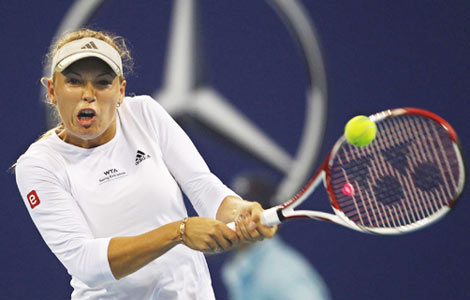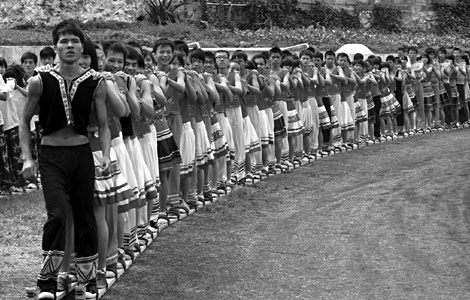Israeli Shechtman wins 2011 chemistry Nobel
Updated: 2011-10-05 19:27
(Agencies)
|
|||||||||||

STOCKHOLM - An Israeli scientist whose work was once ridiculed for being out of line with received thinking won the 2011 Nobel Prize for chemistry on Wednesday for discovering different ways in which atoms could be packed together in solid materials.
The work of Daniel Shechtman, the winner of the prize of 10 million Swedish crowns ($1.5 million), has opened the door for experiments in the use of the quasicrystals, which he discovered, in everything from diesel engines to frying pans.
What Shechtman found in 1982 was that atoms in crystals could be packed in a pattern which did not repeat itself - recalling the intricate mosaics of Arab art and flying in the face of the accepted view that patterns had to be repetitious.
"His discovery was extremely controversial. In the course of defending his findings, he was asked to leave his research group," said the Nobel Committee for Chemistry at the Royal Swedish Academy of Sciences, which made the award.
"However, his battle eventually forced scientists to reconsider their conception of the very nature of matter," it added in a statement. "Scientists are currently experimenting with using quasicrystals in different products such as frying pans and diesel engines."
Noting the mathematically regular but infinitely varied patterns found in Arab and Persian art, the committee said:
"Aperiodic mosaics, such as those found in the medieval Islamic mosaics of the Alhambra palace in Spain and the Darb-i Imam shrine in Iran, have helped scientists understand what quasicrystals look like at the atomic level.
"In those mosaics, as in quasicrystals, the patterns are regular -- they follow mathematical rules -- but they never repeat themselves."
Tel Aviv-born Shechtman, 70, is based at the Technion, Israel Institute of Technology, in the northern city of Haifa. ($1 = 6.916 Swedish Crowns)
Related Stories
Universe work wins physics Nobel 2011-10-04 19:41
Immune system discoveries win 2011 medicine Nobel 2011-10-03 20:04
What the Nobel Laureates Receive 2011-10-02 07:02
Kenyan Nobel winner dies at 71 2011-09-27 07:54
Nobel laureates doubt superluminal neutrino experiment 2011-09-27 06:53
Hot Topics
Libya conflict, Gaddafi, Oil spill, Palace Museum scandal, Inflation, Japan's new PM, Trapped miners, Mooncake tax, Weekly photos, Hurricane Irene
Editor's Picks

|

|

|

|

|

|







